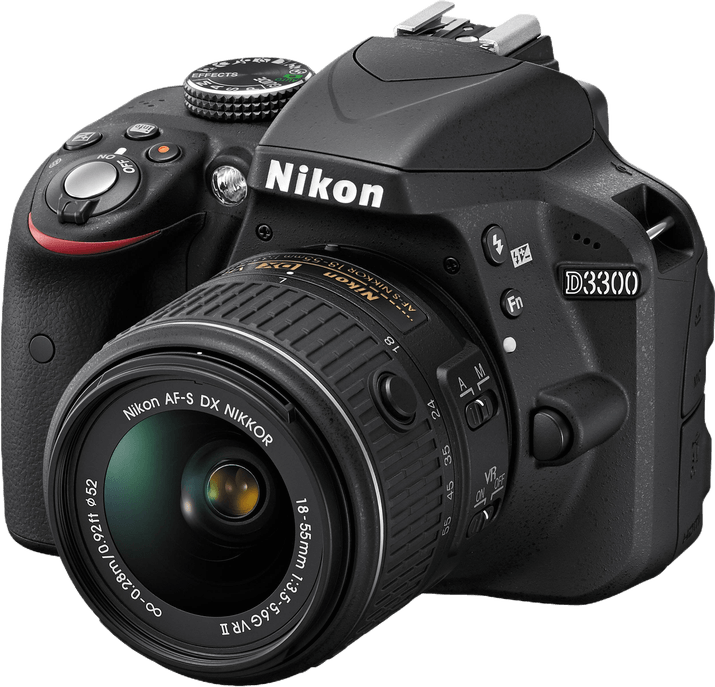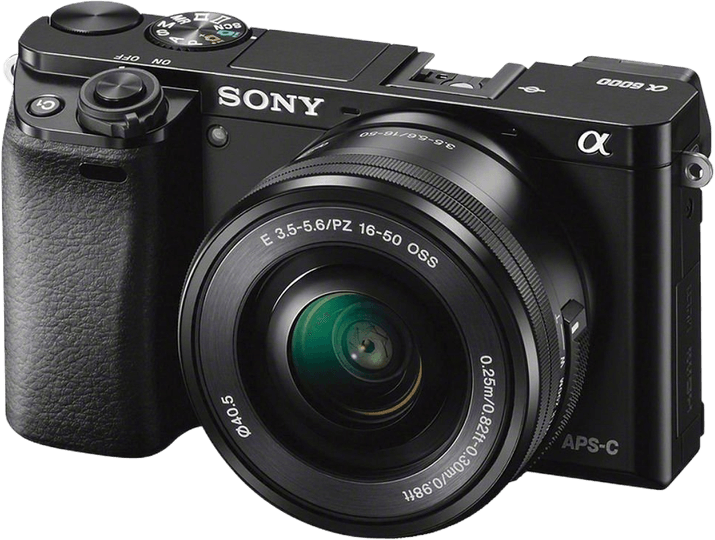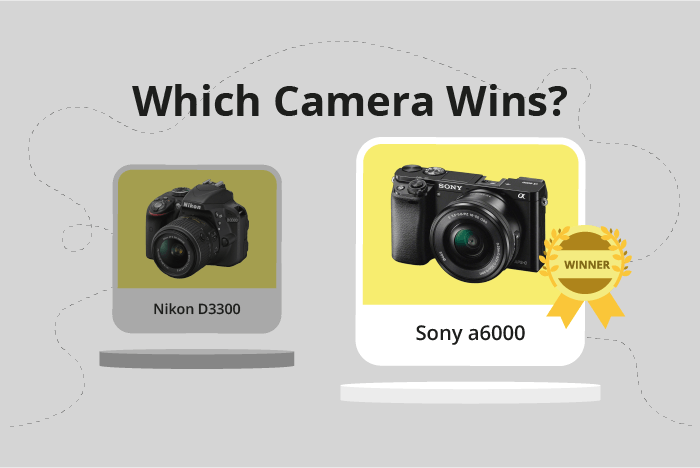Nikon D3300 vs Sony a6000 Comparison
Nikon D3300

Sony a6000

The Sony a6000 outperforms the Nikon D3300 by a slight margin, scoring 57/100 compared to the D3300’s 55/100. Both cameras were released in 2014, with the D3300 launching at $650 and the a6000 at $799. They share some common specifications, such as their release year and announcement dates.
The Sony a6000 has the advantage of being a mirrorless camera, with a smaller size (120 x 67 x 45mm) and lighter weight (344g / 0.76lbs). This makes it more portable and convenient for on-the-go photography.
On the other hand, the Nikon D3300 is a DSLR camera, with a larger size (124 x 98 x 76mm) and heavier weight (430g / 0.95lbs). However, it offers a more affordable price point at launch, which might be an appealing factor for budget-conscious photographers.
Taking these factors into account, the Sony a6000 may be the better option for those seeking a lightweight and compact camera, while the Nikon D3300 could be more suitable for those prioritizing affordability.
Nikon D3300 vs Sony a6000 Overview and Optics
The Sony a6000 wins in the optics comparison with a score of 67/100, while the Nikon D3300 scores 64/100. Both cameras share several specifications, including a 24-megapixel CMOS sensor, an APS-C sensor size, and no image stabilization. Additionally, they both have a DXOMARK sensor score of 82.
The Sony a6000 outperforms the Nikon D3300 in shooting speed and processor. With 11 frames per second (fps), the a6000 is faster than the D3300’s 5 fps. This makes the a6000 more suitable for capturing fast-moving subjects. Furthermore, the Sony a6000 is equipped with a Bionz X processor, which provides better image processing and faster performance compared to the Nikon D3300’s Expeed 4 processor.
On the other hand, the Nikon D3300 has a Nikon F DX lens mount, which offers a wider range of compatible lenses. This gives users more options for various photography styles and situations. However, the Sony a6000’s E-mount lenses are more compact and lighter, making it more convenient for travel and everyday use.
In terms of optics, the Sony a6000 has a slight edge over the Nikon D3300 due to its faster shooting speed and better processor. However, the Nikon D3300 offers more lens options with its lens mount. Ultimately, the choice between these two cameras depends on the user’s priorities and preferences.
Nikon D3300 vs Sony a6000 Video Performance
The Nikon D3300 and the Sony a6000 both have a video score of 56/100, indicating that they have similar video capabilities. Both cameras share common specifications, such as Full HD video resolution, max video dimensions of 1920 x 1080, and a max video frame rate of 60fps. Neither camera has built-in time-lapse functionality.
Despite having the same video score, there are some differences between these two cameras. The Nikon D3300 excels in certain areas, such as its compatibility with a wider range of lenses, allowing for more creative flexibility and better overall image quality. Additionally, the D3300 has a slightly better battery life, which can be advantageous for extended video shoots.
On the other hand, the Sony a6000 has its own benefits in comparison to the Nikon D3300. The a6000 features a faster autofocus system, which can be crucial for capturing fast-moving subjects in video. Additionally, the a6000 has a more compact and lightweight design, making it more convenient for travel and handheld video shooting.
Taking these factors into consideration, it is clear that both the Nikon D3300 and the Sony a6000 have their own strengths and weaknesses in terms of video capabilities. While the D3300 boasts better lens compatibility and battery life, the a6000 has a faster autofocus system and a more portable design. Ultimately, the choice between these two cameras will depend on the specific video requirements and preferences of the user.
Nikon D3300 vs Sony a6000 Features and Benefits
The Nikon D3300 and Sony a6000 both have a feature score of 41/100. Despite having the same score, each camera has its strengths and weaknesses in terms of features.
Both cameras share several common specifications. They each have a 3-inch screen and similar screen resolution, with the Nikon D3300 at 921,000 dots and the Sony a6000 at 921,600 dots. Neither camera has a touchscreen, GPS, or Bluetooth capabilities.
The Sony a6000 has two advantages over the Nikon D3300. It is equipped with a flip screen, which allows for more flexibility when composing shots, especially in challenging angles or when capturing self-portraits. Additionally, the Sony a6000 has built-in Wi-Fi, enabling users to easily transfer images to other devices and share them online.
On the other hand, the Nikon D3300 does not offer any features that surpass the Sony a6000. It lacks both a flip screen and Wi-Fi connectivity, making it less versatile and convenient for users who prioritize these features.
In comparing the Nikon D3300 and Sony a6000, both cameras have identical feature scores, but the Sony a6000 holds an advantage with its flip screen and Wi-Fi capabilities. These additional features make the Sony a6000 a more appealing option for users who value convenience and flexibility in their camera’s features. The Nikon D3300, while not offering any unique advantages, remains a solid choice for those who do not require a flip screen or Wi-Fi connectivity in their camera.
Nikon D3300 vs Sony a6000 Storage and Battery
The Nikon D3300 outperforms the Sony a6000 in storage and battery, scoring 32 points compared to the Sony’s 21 points. Both cameras have one memory card slot and accept SD, SDHC, and SDXC cards. However, the Sony a6000 also accepts Memory Stick Pro Duo and Pro-HG Duo cards, offering more storage options.
The Nikon D3300 has a significant advantage in battery life, providing 700 shots per charge compared to the Sony a6000’s 360 shots. The D3300 uses an EN-EL14a battery, while the a6000 uses an NP-FW50 battery. Neither camera offers USB charging.
Despite the Sony a6000’s additional storage compatibility, the Nikon D3300’s superior battery life makes it the better option for extended shooting sessions. Users who prioritize battery life should choose the Nikon D3300, while those who value diverse storage options may prefer the Sony a6000.
Alternatives to the Nikon D3300 and Sony a6000
Are you still undecided about which camera is right for you? Have a look at these popular comparisons that feature the Nikon D3300 or the Sony a6000:

